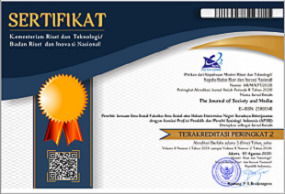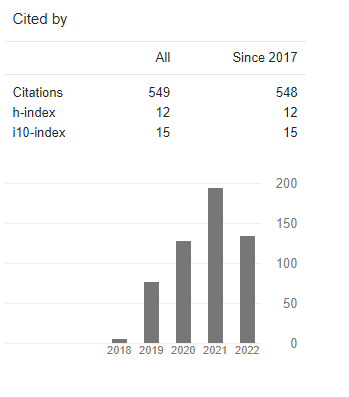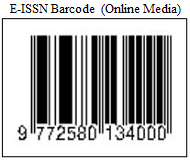Cybersex and Religion: Intimacy, Resistance, and Negotiation of Islamic Students In Indonesia
DOI:
https://doi.org/10.26740/jsm.v6n1.p104-120Keywords:
cybersex, religion, youth, resistance, negotiationAbstract
This article focused on the teenage generation and religion as the dominant sources of truth in Indonesia, especially Islam. Religion rules become a norm that is upheld and fought for. This article explained how the generation of teenagers in Surabaya who have the same background at Islamic Universities. They used to apply virtual spaces related to sexual activities. Apart from that, this paper also tried to relate their practice to the religious teachings they profess. The informants of this study were students at several universities in Surabaya. Those who become informants were students, consisting of males and females, who openly admitted to having the habit of engaging in sexual activities in cyberspace. This research aimed to explain the practices of resistance and negotiation that occur on religious teachings. The data collection method used was in-depth interviews which focused on how they used virtual space relating to sexuality. There were various entrances to various forms of sexual simulacrums and sexuality within cyberspace, various sexual acts, and the scene that "offer" various sexual activities, such as voyeurism, role-playing, sexual game, cyber-fetishism, and long-distance sexual activity via the internet (teledildonics). In those various activities, men were more open in telling about their activities than women because of strong patriarchal tradition. Besides, they also tried to negotiate the concept of sin in religion. They considered the consequences of sin when they do sexual virtually were heavier than when they did it.
References
Adorjan, M. C., & Ricciardelli, R. 2019. Cyber-Risk and Youth: Digital Citizenship, Privacy and Surveillance. Routledge Press.
Arikunto, S. 1998. Prosedur Penelitian Suatu Pendekatan Praktek. PT. Rineka Cipta.
Aukstakalnis, S., & Blatner, D. 1992. Silicon Mirage; the Art and Science of Virtual Reality. Peachpit Press.
Bell, D. 2001. An Introduction to Cybercultures. Routledge Press.
Cooper, A; Griffin-Shelley, E. 2011. The Internet: The next Sexual Revolution. In Sex & the Internet: A Guidebook for Clinicians (A. Cooper (Ed.). Brunner Routledge.
Giddens, A. 1984. The Constitution of Society: Outline of the Theory of Structuration. Univ of California Press.
Heim, Michael. 2001. Erotic Ontology of Cyberspace : Reading Digital Culture. Editor D. Trend. London: Blackwell.
Moleong, L. J. 2008. Metodologi Penelitian Kualitatif (Revisi). PT Remaja Rosdakarya Offset.
Myketiak, C. 2020. Online Sex Talk and the Social World: Mediated Desire. Palgrave Macmillan.
NB., Ryder. 1965. The Cohort as a Concept in the Study of Social Change, Reproduced (Hardy MA (Ed.); Studying A). Sage Publications.
Parker, D. H. 1984. The Principles of Aesthetics. FS Crofts & Company.
Downloads
Published
How to Cite
Issue
Section
License
Copyright (c) 2022 The Journal of Society and Media

This work is licensed under a Creative Commons Attribution 4.0 International License.
 Abstract views: 742
,
Abstract views: 742
, PDF Downloads: 369
PDF Downloads: 369












